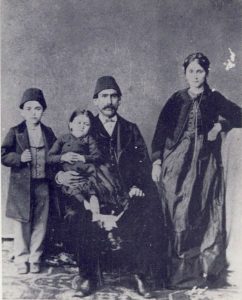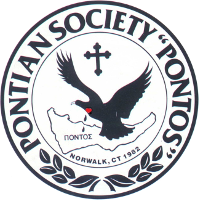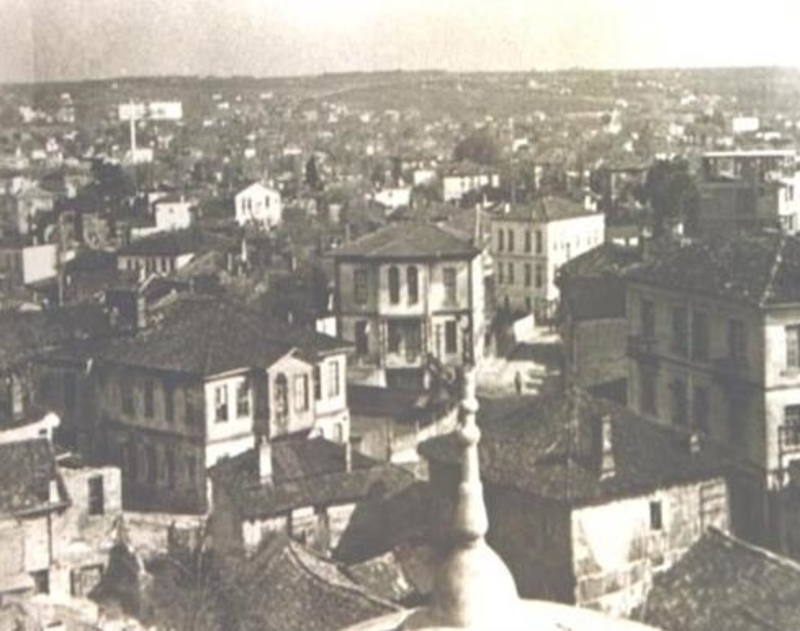
Pafra, also written as Bafra, is one of the cities of Pontus. It is located in the prefecture of Samsun next to the mouth of the river Aly and had about eight thousand inhabitants. Its inhabitants were Greeks, although they spoke Turkish and were distinguished for their lively religious and national feeling. The tobacco of Pafra was famous for its fragrance and this justified the great commercial movement in Bafra resulting in the existence of many rich tobacco merchants and bankers. They did not lag behind in letters as there were primary schools and a full urban school. However, the destructive rage of the Turks and especially of Kemal and Topal Osman’s instrument fell fiercely on Pafra. Antonios I. Gavriilidis, a tobacco merchant from Bafra who wrote the tragedy of his homeland, tells us about how the Hellenism of Pafra and the surrounding Greek villages were exterminated.
Nowhere was there more systematic slaughter and extermination, because nowhere was there such a dense Hellenism both in the cities and in the countryside. The extent of the destruction and doom is so great that the imagination cannot comprehend it. The report published by the newspaper “Reform” gives a vague picture of the catastrophe. “On April 5, 1921, the Turkish army of 10,000 men, assisted by Chets and villagers, launched a surprise offensive against the entire Pafra region. What happened is impossible to describe accurately. Arsons, shootings, spear killings, hangings, humiliations. This horrific situation lasted for a month so that the villages were turned into ruins while, except for a few inhabitants, everything was destroyed.
Residents of the village of Mousamli, which was three hours away from Pafra, were blocked at Tsigaloglou’s house and set on fire along with the house. The same fate befell the inhabitants of the villages of Sourmeli, Akkonak, Kigil Gol and Ada of the Amisos region. In the face of these atrocities, many Turkish soldiers regretted not being able to bear the sight of orgies and torture.
Their fellow Turkish soldiers were flogged. Many villagers who survived the violence fled to Pafra thinking they had been released. The Greeks of Paphos used every means to save their city from the fury of the Turks. They offered an infinite ransom to the commander of Cemil-bey who assured them in his speech that Pafra would not be in any danger. But it turned out afterwards that Turkish lips do not know the truth. In the morning hours of June 18, 1921, terrible news spread. The city was surrounded by an infinite number of slaughterers, of all conspiracies. Troops of Turkish soldiers, herds of wild Chets, Albanians, Laz with police chiefs, were scattered in every neighborhood of the city, demanding the surrender of all the men of each family. They took them to the police station and at the same time looted their houses. The courage and self-denial of the Greek women of Pafra is indescribable. No one betrayed her husband, nor did she confess to her neighbors despite the torture suffered by the Turks. On the first day, they arrested 535 Greek men, tied their hands behind their backs and took them to the burned church in the village of Elezli in the Soulou Dere area without allowing them to have supplies, food or clothes with them. Among them were seven priests and Murat Tselepoglou and Vassilios Karasavvoglou. Many Turkish residents from the surrounding villages, under the orders of the prefects Nevrizin Mehmet and Tirali Zate Mehmet, surrounded the church fully armed. The unfortunate Paphraeans were first robbed and then stripped of their clothes. Immediately afterwards, the seven priests were taken out and slaughtered in front of the church door. Inside the church, the ex-pope John predicted the sad tragedy that awaited them and began to sing the funeral and the funeral procession with tears. After this massacre, the Turks climbed the walls of the temple where all the Paphraeans were tied up and started firing furiously at them until their weapons were burned. They then followed with the spears of their weapons and did not stop there either, but continued with the axes. That massacre was horrific and extremely heinous. Nikolas Iordanoglou paid the Turks 300 gold pounds so as not to torture them, but to kill them with a rifle. But that did not happen either. Four men who were miraculously severely wounded were saved from this massacre and at night they escaped to Nehien – center of the Greek refugees – where these terrible events were narrated.
A second mission of victims included about three hundred Greek Paphraians, including the merchants Georgios Kozlou and Kyriakos Solomonoglou. On the way, they killed Kozlou and took his head to the deputy governor of Pafra. All the Greeks of this mission were locked up in the church of the village of Selamlik in Pafra. Inside, the Turks handed them over to the flames and where they were martyred while burning alive. Few of them survived and narrated the plight of their compatriots. In the face of these events that threatened the city of Pafra, many Greeks decided and dared a bold exit by breaking the Turkish military barrier and headed to Nepien where they joined the guerrillas there. With the help of the guerrillas, about five hundred women and children were rescued. The Turkish government announced that the conscripts would be released from exile as long as they were handed over to the local military authorities. More than 500 young people between the ages of 15 and 35 believed in this announcement and showed up at the military offices.
Thus was formed the third mission of 400 conscripts and 380 non-conscripts. These 780 men were taken to the church in the village of Kovce Su. Among them were the banker Demosthenes Delmitoglou, Abraham Mavridis, Pantelakis E. Arzoglou, Aristidis Chatzisavvas and many other merchants.
No one was saved from this sad mission and the description of their martyrdom is not saved. Only thirty-five people from this mission arrived in Elvistan, the place of their exile, only to find the then Prime Minister of Ankara, Fehti Pasha, and to announce to the Turkish National Assembly that all the exiles had successfully reached their destination, that is, to interior of the country. Thus – according to him – the deportation of Greeks from 18 to 50 years to the interior of Turkey took place. This cynicism by a prime minister to announce in this way the massacre and annihilation of an entire people can only be titled as Turkish.
SOURCE: kotsari.com Part 1, Part 2.

